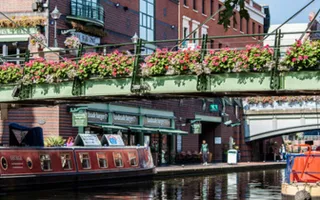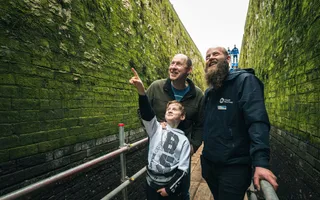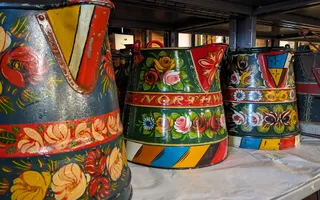Canal & River Trust may have been formed in 2012 but our roots go much further back than this.
1800s: Canal companies are in charge
When they were first built, each canal came under the authority of a canal company. Some canal companies owned a number of canals. They were responsible for collecting tolls and making sure the waterways were fit for use.
As railways became more commonplace, canal companies found they couldn’t compete with the speed and the canal age drew to a close. In some areas, canal companies were bought out by railway companies. This was usually to close them down and remove the competition or to provide routes that a railway could easily be built on.
1948: The government takes over
By the 1900s, many canals lay abandoned and forgotten. In 1948 what was left of the canal system was nationalised, with the British Transport Commission taking control.
During the 1950s, as transport switched from rail to cars and lorries, there was a need for more roads. This led to many canals being built over. By 1962, the largest network of canals in the world had shrunk by more than half to 2,000 miles.
A new Transport Act 1962 transferred responsibility for the remaining canals to the new British Waterways Board (later known as British Waterways). Another Transport Act in 1968 required the British Waterways Board to keep commercial waterways fit for commercial use and cruising waterways fit for cruising.
1990s: A new canal age
During the 1990s and 2000s our canals saw a new burst of life. The government of the day saw a huge opportunity to use canals to drive the regeneration of rundown and neglected city centres.
This new ‘canal age’ saw new investment from government and grants from the Heritage Lottery Fund. Canals were restored and waterside areas improved. Developers built new homes and businesses set up shop. Nature and wildlife thrived. These forgotten places became the heart of the community once again - providing places for us to live, work and relax.
A new interest in living and holidaying on the water took hold and by the early 2000s, there were more boats on our canals than during the industrial revolution.
In 1999 British Waterways set up a charity, The Waterways Trust. As well as operating the National Waterways Museum at Ellesmere Port and Gloucester Docks, The Waterways Trust’s aim was to work with partners and volunteers to build support for our waterways.
2012: A new future with a charity at the helm
Keen not to repeat the mistakes of the past, British Waterways wanted to find a way of making sure these spaces continued to flourish. Becoming a charity would open up new opportunities to raise funds and more people could get involved as volunteers.
On 2 July 2012, all of British Waterways responsibilities and assets in England and Wales were transferred to a new charity, Canal & River Trust. British Waterways' work in Scotland remained part of the Scottish Government, operating as Scottish Canals.
Today, our canals and rivers are loved, used and enjoyed every day by millions of people. We bring nature, wildlife and history to the doorstep for more than five million people. We give hundreds of thousands of runners, cyclists and dog walkers safe spaces to enjoy. These living, breathing waterways transform places and enrich our lives.










